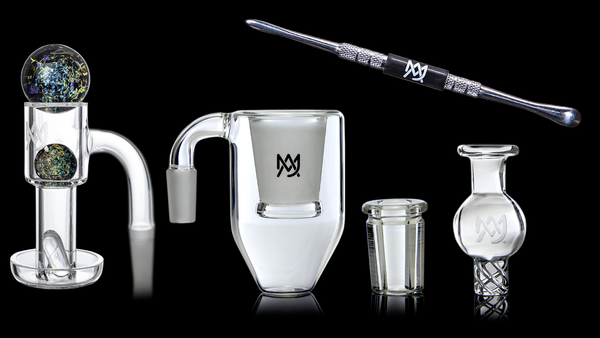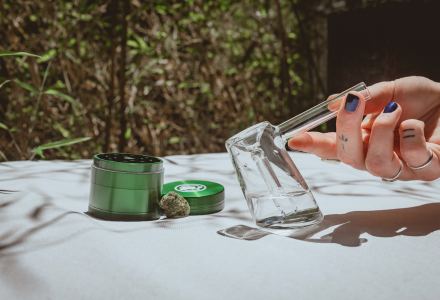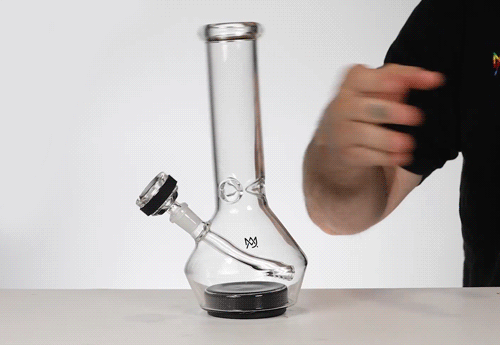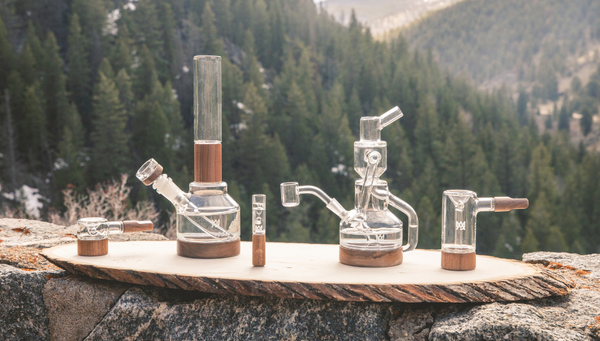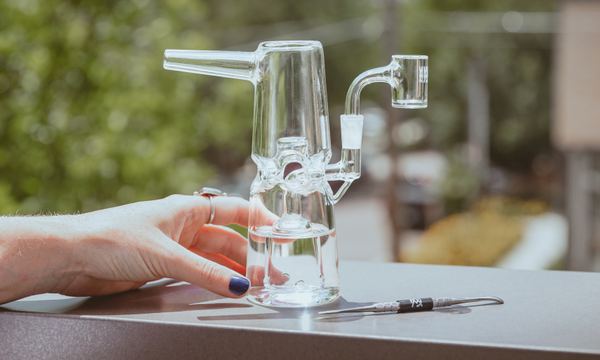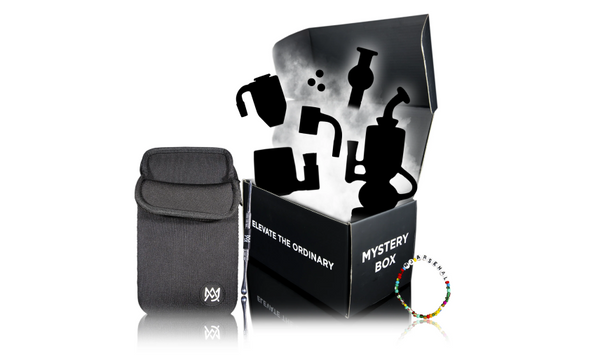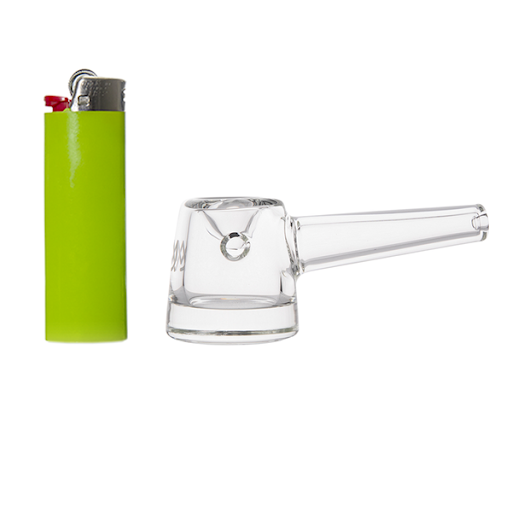
Why Do Glass Pipes Change Color?
Have you ever thought, 'Why does my glass pipe change color?' You're not alone. This curious spectacle is no magic trick but an intricate dance of science and art. It's all about the fuming process, precious metals, and the resin from your smoke.
Intrigued? Good, because you're about to dive into the captivating world of color-changing glass pipes, understand its science, and learn how to enhance this mesmerizing feature.
Key Takeaways
- Prolonged exposure to high temperatures can cause the colors on glass pipes to fade and wear out.
- When cleaning color-changing pipes, remove loose debris, soak in a cleaning solution, rinse thoroughly, and air dry before gently rubbing away stubborn residue if necessary.
- Aggressive cleaning methods, such as using isopropyl alcohol and salt, can strip away electroplated coloring on glass pipes.
- Color-changing pipes work by having resin build up inside the bowl and vapor path, which blocks light from passing through the fumed metal and creates the illusion of color change.
The Science Behind Color Change
When it comes to understanding the science behind color change in glass pipes, you need to consider a few key factors.
Color-changing glass pipes, often referred to as chameleon glass pipes, owe their stunning transformation to a process known as glass fuming. This technique involves the application of silver fumes or gold fumes, which adhere to the surface of the glass, creating a sheen that changes color under different light conditions and angles.
As you use your pipe, the accumulating resin alters how light interacts with the fumed layer, causing the colors to shift and evolve.
It's a fascinating interplay of art, science, and craft. Mastering glass fuming requires immense skill, patience, and precision, but the result is a unique, dynamic piece of art that changes and grows with you.
Effects of Heat on Glass Pipes
Understanding how heat affects your glass pipe is crucial to maintaining its vibrant colors and longevity. The effects of heat on glass pipes are complex, altering the pipe's appearance and structure.
Not all glass pipes react to heat in the same way. The type of glass used and the presence of a metal alloy can significantly influence how a pipe responds to heat. For instance, glass hand pipes fumed with a metal alloy often change colors when exposed to heat. This color change isn't due to the glass itself but the thin metallic layer on the glass surface. Heat causes the metal alloy and the glass to expand at different rates, causing an optical illusion that alters the pipe's color.
Heat can also compromise the integrity of your glass pipe. Extreme temperatures can cause cracks or breaks in the pipe. Therefore, it is essential to avoid exposing your pipe to dramatic temperature swings. It's also advisable to clean your pipe regularly, as the buildup of residue can intensify the effects of heat and accelerate color change.
How Resin Influences Color Change
While you may not realize it, the resin that builds up in your pipe over time plays a significant role in the color-changing process of your glass pipe. You might've noticed how your clear glass pipe's blue and purple hues shift and darken after several uses. This transformation isn't magic but rather a result of how resin influences color change.
As you smoke, resin, a slightly sticky byproduct, accumulates. This residue clings to the inside of your pipe, forming a thin layer. Initially, this thin layer may seem insignificant. However, as it continues to build, it affects how light interacts with your pipe.
Your clear glass pipe is slightly translucent, allowing light to pass through. When clean, the glass refracts light, showcasing the pipe's inherent blue and purple hues. However, as resin builds up, it blocks the light, altering the light refraction. This process causes the colors to appear deeper and more intense.
Cleaning and Maintenance of Glass Pipes
Proper care and cleaning of your glass hand pipes can significantly extend their lifespan and ensure they continue to function effectively. The cleaning and maintenance of glass pipes involves a few simple steps.
First, you need to remove any loose debris from the pipe. A quick rinse with warm water will do the trick.
Then, fill a bag with a mix of isopropyl alcohol and coarse salt. Submerge your pipe in this mix and give it a good shake. The salt acts as a scrubber, working through the tough residue, and the alcohol dissolves the leftovers.
After a thorough rinse, your pipe should regain its spotlessness and clarity. Remember not to use boiling water or harsh cleaning solutions, which could damage the pipe's color and structure. Furthermore, regular maintenance won't only keep your pipe clean but also preserve its vibrant colors.
Understanding Color-Changing Pipes
The secret to how color-changing pipes work lies in fuming, where artisans apply a layer of precious metals like silver or gold to the outside of a glass pipe. When you use your color-changing glass pipe, the smoke's resins start sticking to the inside. This residue changes how light interacts with the fumed glass, causing the glass pipes to change color over time.
Chameleon glass is another name for this color-changing marvel. It's the same science and spectacle of shifting hues but with a fancier name. The fumed glass and the build-up of resin together create a unique, intricate pattern, transforming your pipe into a personal work of art.
Understanding color-changing pipes is all about appreciating the interplay of light, heat, and chemistry. Each smoke session adds another layer to your pipe's story, gradually revealing a kaleidoscope of colors. So, your pipe isn't just a tool — it's an ever-evolving piece of functional art.
Techniques in Fuming Glass
Let's delve into the various techniques artisans employ in fuming glass to create those stunning color-changing effects you admire. The process starts with a heated glass pipe until it reaches a malleable state. Precious metals such as silver or gold are then introduced to the flame. The metals produce fumes that adhere to the heated glass surface, resulting in a glass pipe fumed with a thin metallic layer.
This layer is what gives color-changing pipes their unique property. Initially, your pipe might exude a silvery or golden sheen, but as it's used, resin buildup causes light to refract differently, leading to an array of colors. The type of precious metal used also influences the color spectrum. For instance, gold fumes impart a warm palette of pinks and reds, while silver fumes create cooler blues and greens.
Artisans often employ additional techniques in fuming glass for more intricate designs. They may use dot patterns, stripes, or layer different metals for a multicolored effect. The resulting masterpiece isn't just a smoking tool but an ever-changing work of art in your hands.
Styles of Color-Changing Pipes
Let's delve into the various styles of color-changing pipes you can choose from. These pipes are a cool addition to any collection and bring a dynamic visual element to your smoking experience.
One style you might consider is the spoon pipe. This style often features a fumed glass design that shifts from a transparent or lightly colored ion to vibrant purple hues after use.
Another popular style is the glass chillum pipe, which is smaller but can also showcase a beautiful array of color changes, including a striking yellow hue.
The Role of Borosilicate Glass
In your exploration of color-changing pipes, you'll find that borosilicate glass plays a pivotal role in their creation and functionality. This type of glass, known for its strength and thermal resistance, is the canvas on which the magic of color transformation occurs.
Artisans use 'fuming' to create the color-changing effect. They coat the borosilicate glass with a thin metal layer, such as gold or silver. As light interacts with this layer, it creates the stunning color shifts you see.
Thin Film Interference Explained
You might be wondering how the beautiful color shifts in your glass pipe occur, and the answer lies in a phenomenon known as thin film interference.
When the metal fumes in your pipe cool, they form a thin film on the glass surface. This film fascinatingly interacts with light. You see, light waves consist of peaks and troughs, much like waves in the ocean. When light hits the thin film, some of it reflects off its outer surface, while some penetrates the film and reflects off the inner surface.
Here's where the magic happens. These reflected light waves can either reinforce or cancel each other out, depending on the film's thickness and the light's wavelength. This results in certain colors being amplified and others subdued, leading to the stunning color changes you observe.
Discover the Art of Borosilicate Glass Pipes at MJ Arsenal!
As you light up next time, remember the artistry, science, and history hidden in the mesmerizing hues of your pipe.
Elevate your smoking experience with our exquisite collection of Borosilicate Glass Pipes. Crafted with precision and passion, each piece at MJ Arsenal is a work of art designed to enhance your sessions.
Explore a range of unique and functional glass pipe designs.
Experience the superior quality of borosilicate glass bubblers.
Elevate your smoking game to the next level.
Don't miss out on the opportunity to own a piece of craftsmanship that's as beautiful as it is functional. Shop now and elevate your smoking journey with MJ Arsenal!


 Alpine Series
Alpine Series
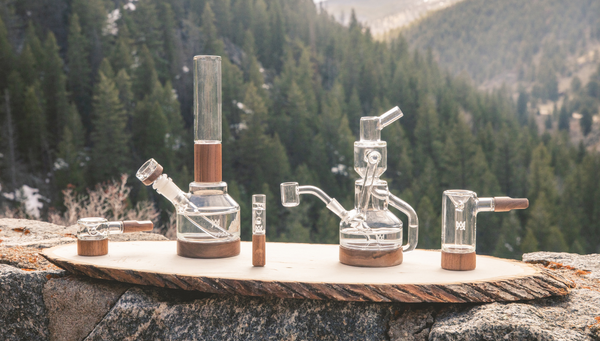
 Bubblers (NEW)
Bubblers (NEW)
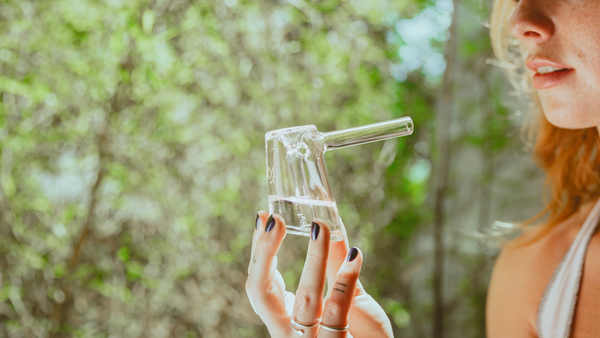
 Hand Pipes (NEW)
Hand Pipes (NEW)
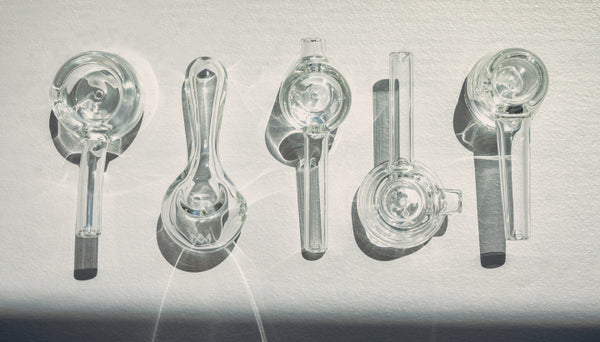
 Dab Rigs
Dab Rigs
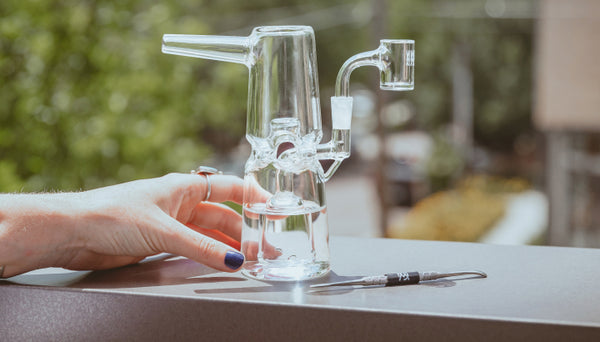
 Bongs (NEW)
Bongs (NEW)

 E-Rig Accessories (NEW)
E-Rig Accessories (NEW)

 Mystery Boxes
Mystery Boxes

 Accessories
Accessories
